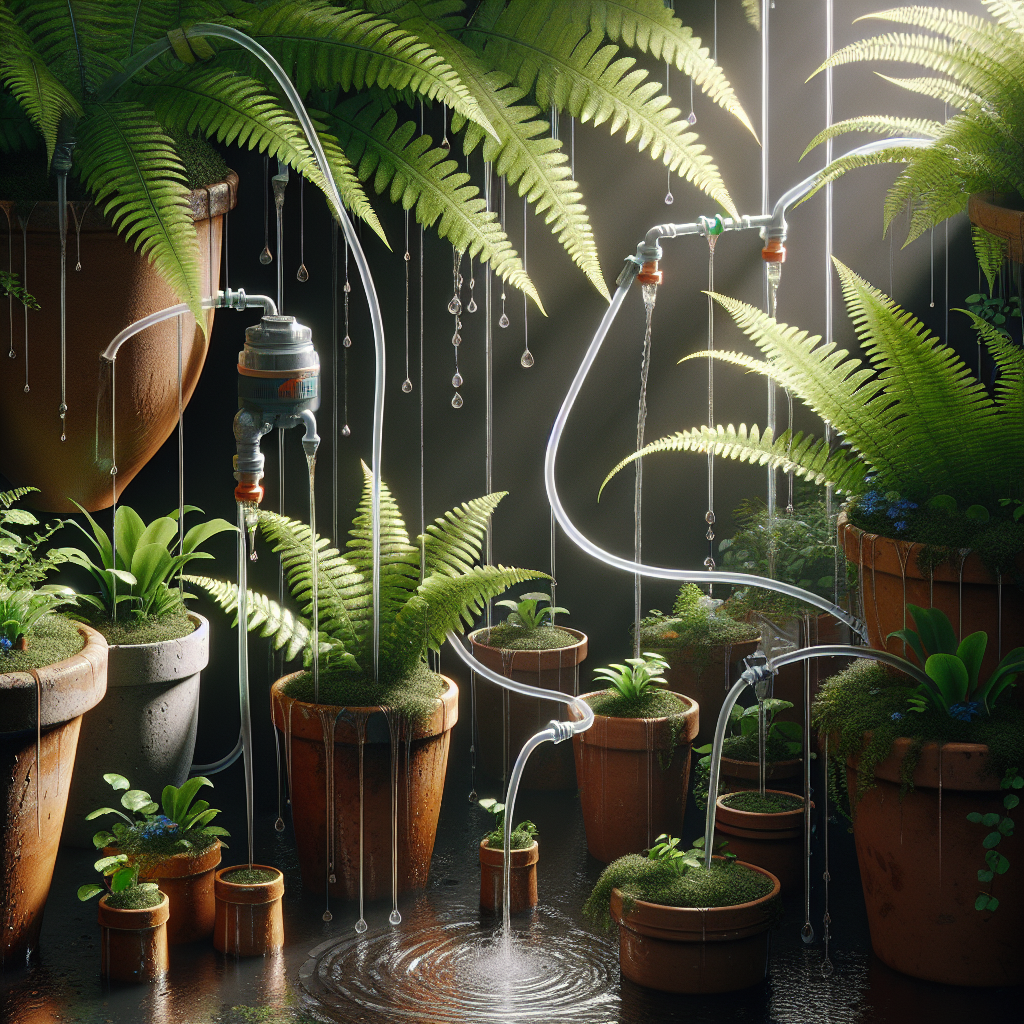Cultivating ferns is a popular choice among garden enthusiasts due to their lush green leaves and ability to thrive in various environments. One effective way to ensure healthy growth is by using a slow drip watering system for containers. This article will explore the benefits of using this watering method and provide a step-by-step guide on how to cultivate ferns successfully.
Ferns are unique plants that have been around for millions of years, making them an excellent addition to any garden or indoor space. Unlike other plants, ferns do not flower or produce seeds. Instead, they reproduce through spores, which is why they are often referred to as “primitive” plants.
One of the key factors in successfully cultivating ferns is providing them with the right amount of water. While some fern species prefer moist soil, others can tolerate drier conditions. Regardless of the species, ferns are generally sensitive to overwatering and are prone to root rot if their roots sit in waterlogged soil for prolonged periods. A slow drip watering system eliminates this risk by delivering water directly to the roots at a steady pace, ensuring proper hydration without waterlogging.
Benefits of Using a Slow Drip Watering System for Fern Containers
1. Prevents overwatering: By supplying water directly to the roots at a controlled rate, a slow drip system prevents excessive moisture accumulation that can lead to root rot.
2. Conserves water: Traditional watering methods such as overhead sprinklers or hand-watering often result in wastage due to evaporation or runoff. A slow drip system reduces water waste by delivering water precisely where it’s needed, minimizing evaporation loss.
3. Uniform hydration: Different parts of a container may have varying moisture levels when watering manually, leading to uneven distribution across the plant’s root system. With a slow drip system, each plant receives consistent hydration.
4. Promotes deep root growth: When watered slowly and deeply from below, ferns are encouraged to develop a robust root system that reaches deeper into the soil, enhancing plant stability and nutrient uptake.
Steps to Cultivate Ferns Using a Slow Drip Watering System for Containers
Step 1: Choose the right container
Selecting a container is crucial for the successful growth of ferns. Opt for a pot with drainage holes at the bottom to prevent waterlogging. The size of the container should accommodate the fern’s current size while allowing room for growth.
Step 2: Prepare the potting mix
Ferns thrive best in well-draining soil mixes that retain moisture while preventing waterlogging. A suitable mix can include peat moss, perlite, and compost in equal parts. Avoid using heavy clay or sand-based soils as they may not provide adequate drainage.
Step 3: Install the slow drip watering system
There are various types of slow drip watering systems available, such as drip irrigation kits or self-watering pots specifically designed for container gardening. Follow the manufacturer’s instructions to install the system in your chosen container.
Step 4: Plant your fern
Carefully remove the fern from its original pot, loosen its roots gently, and position it in the center of the new container. Add more potting mix around the roots until it reaches approximately one inch below the rim of the container. Gently firm down the soil.
Step 5: Adjust watering rate
Most slow drip systems allow you to adjust water flow according to your plant’s needs. For ferns, a moderate watering rate is usually sufficient. Monitor your fern regularly and adjust if necessary.
Step 6: Regular maintenance
Check your fern’s soil moisture regularly by inserting your finger about an inch deep into it. If it feels dry, increase watering slightly; if it feels too wet, reduce watering frequency.
In conclusion, using a slow drip watering system for cultivating ferns in containers offers several advantages over traditional watering methods. This method prevents overwatering, conserves water, promotes uniform hydration, and encourages deep root growth. By following the step-by-step guide outlined above, you can create an optimal environment for your ferns to thrive and enjoy their lush green foliage all year round.














